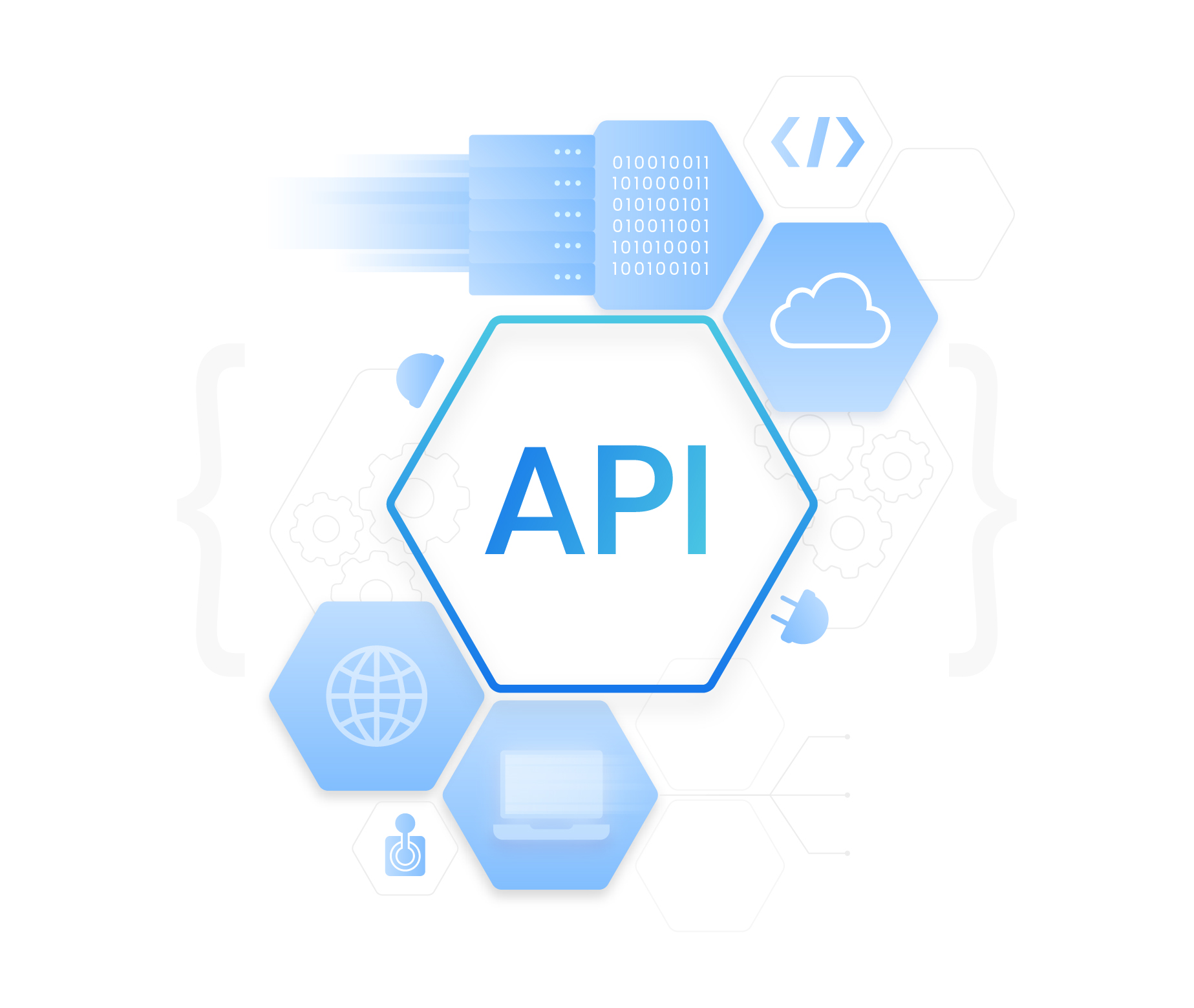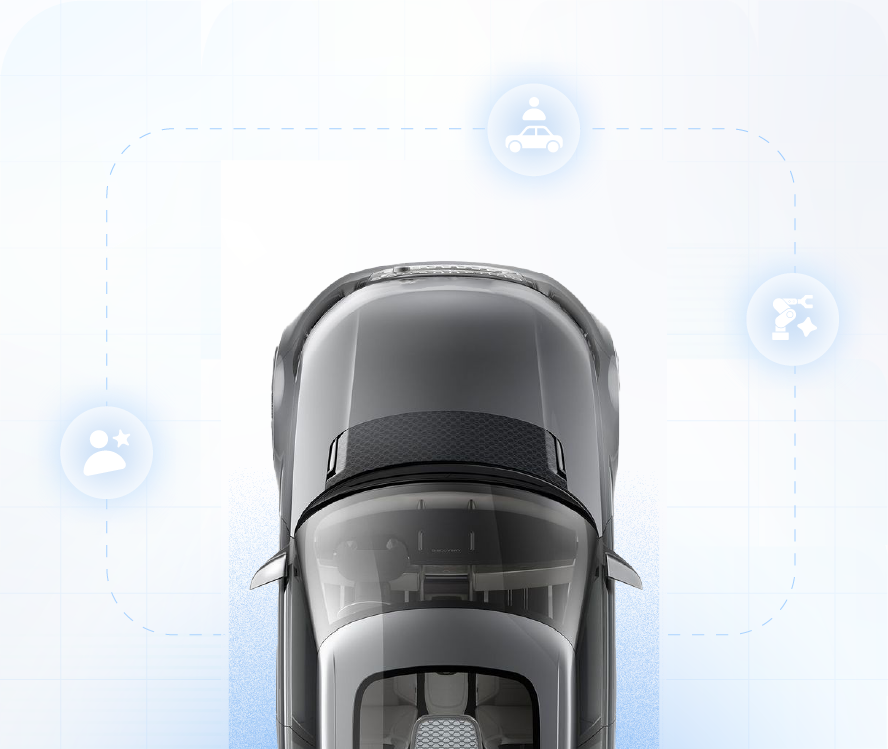Blog
How the right digital retail stack can future-proof your dealership
By Eva Kellershof, on August 22, 2025
The auto industry is facing a multitude of challenges and opportunities, from EVs and subscriptions to evolving modern customer expectations. Your traditional, all-in-one dealership software wasn't built for this new era. This article breaks down why the old, monolithic systems are holding you back and shows how a flexible, modular digital retail stack is the key to adapting, innovating, and building a truly future-proof dealership.

The dealership model has seen more disruption in the last 5 years than in the previous 5 decades. It's a perfect storm of trends hitting the automotive industry, demanding rapid evolution from dealerships everywhere. We're witnessing the electric vehicle (EV) transition, bringing with it entirely new sales processes and data points. Alongside this, subscriptions and flexible ownership models have been challenging traditional sales methods. OEMs are experimenting with direct-to-consumer (DTC) sales, bypassing the traditional dealership entirely. And through it all, customer expectations continue to skyrocket, demanding a seamless, "Amazon-like" digital, cross-platform experience.
The problem? The traditional, all-in-one, monolithic dealership software, your DMS, CRM, and other systems, was built for a different era. These rigid systems are slow to update and create frustrating data silos, making it incredibly difficult for dealerships to adapt quickly to these seismic shifts.
The solution isn't just another piece of software; it's a new philosophy. To meet the expectations of the modern customer and future-proof your dealership against the vulnerabilities of cyber-attacks, you need a modular, API-first digital retail stack that allows you to adapt, scale, and innovate at the speed of the market.
The old way vs. the new way: Monoliths vs. modules
To truly understand the path forward, let us first clearly define the problem with the status quo.
The monolithic trap (The old way)
Imagine your current dealership software as a massive ship that takes several hours to change direction, or a house that must be torn down completely rather than simply renovated. That's the monolithic trap. These all-encompassing systems come with significant pain points:
- Vendor lock-in: You're stuck with one provider’s good, bad, and ugly features, with little room for customization or choosing best-in-class alternatives.
- Data silos: Your website, CRM, and F&I desk often don't talk to each other. This creates a broken customer journey, forcing customers to repeat information and leading to massive internal inefficiencies.
- Slow innovation: If you need a new feature for something cutting-edge, like EV battery health data or subscription billing, you could be waiting months or even years for your provider to finally implement it.
- Inflexibility: Modern dealerships need to connect with both internal tools (such as CRMs and DMS), and external platforms like banks, lender systems, insurance providers, etc. Inflexible monolithic systems make that difficult and time-consuming.
- Protection & security: An architecture that adds an additional integration layer to your black box DMS will ensure that dealerships will stay online and be able to conduct business even when their DMS is suspended. Lenders and F&I providers will remain connected for customer check-outs.
The modular, API-first stack (The new way)
Now, imagine building with LEGO bricks. Each brick is a best-in-class tool for a specific job, such as CRM, inventory management, desking, or finance. This is the essence of a modular approach: the ability to choose the best tool for each function and swap components in and out as different needs and better solutions emerge.
According to recent research from firms like Deloitte, McKinsey, and KPMG, success now hinges on delivering a personalized, omnichannel customer experience (Deloitte, 2024), maximizing the full lifetime value of the customer beyond the initial sale (McKinsey, 2024), and achieving operational agility to adapt to new market realities like EVs and agency sales models (KPMG, 2024). These strategic goals are contingent upon a dealership's technological foundation. Legacy systems create data silos and operational friction, while a modern, API-based, modular system provides the necessary integration, flexibility, and data fluidity to execute on these critical business imperatives.
Meeting the modern customer's expectations
The balance of power in auto retail has shifted. Today’s most influential buyers, i.e. Millennials and Gen Z, approach purchasing with a digital-first mindset that is shaped by their seamless experiences with on-demand leaders like Amazon and Netflix. They reject the traditional, fragmented car-buying process and demand an experience that is personalized, transparent, and flawlessly integrated across every channel.
This modern consumer journey often begins on a mobile device, continues on a laptop in the, and may culminate in a targeted, efficient visit to the dealership. They expect real-time inventory status, personalized payment options, and for their data to travel with them. According to Deloitte’s 2024 Global Automotive Consumer Study, this desire for digital convenience is reshaping the industry. The study reveals that a remarkable portion of younger consumers, for instance 60% of Gen Z in the US, would be interested in a fully virtual purchasing process. Furthermore, consumers of all ages are seeking efficiency; a significant number want to complete complex steps like financing and insurance paperwork online to save valuable time at the dealership.
Delivering this level of connected experience is impossible with legacy, siloed systems. A modern, modular solution with robust APIs is the engine for this new retail model. It ensures that:
- The customer’s online vehicle configuration, trade-in valuation, and pre-approved credit application are instantly and accurately reflected.
- The dealership website displays real-time inventory status, preventing the immense frustration of a customer inquiring about a vehicle that has already been sold.
- When the customer arrives for a test drive or final signing, the F&I manager isn't starting from scratch. Instead, they are validating information and offering truly personalized products based on the rich data already provided.
This creates a high-trust, low-friction journey that not only wins the immediate deal but also builds the lasting loyalty essential for capturing customer lifetime value in the modern automotive landscape.
The building blocks: Anatomy of a modern digital retail stack
So, what are these "LEGO bricks" that make up a modern digital retail stack? Let's break down the core components:
- Omnichannel retail platform: This is your customer-facing "digital showroom". It pulls data from your inventory and allows customers to move seamlessly through the buying process. Key functions powered by sub-modules include:
- F&I / Desking & penny-perfect payments: This is critical. You need a dynamic tool that can handle complex financing, leasing, cash deals, and, crucially, new models for EVs and subscriptions. It must provide accurate, real-time payment calculations.
- Digital contracting & e-signature: The essential tools to finalize the deal securely and remotely, streamlining the paperwork process.
- Dealer portal: This is the dealership's command center, a single dashboard to view, manage, and engage with every customer's digital deal. Here, your sales managers can review, adjust and structure a counteroffer, and push it directly back to the customer in real-time, creating a seamless, collaborative negotiation.
- Inventory management & merchandising: This module manages all vehicle data, ensuring real-time information on asset availability, location, and status (e.g., "On the Lot," "In Transit") is accurately fed to all other parts of the stack.
How the stack future-proofs your dealership (The payoff)
Now, let's directly connect this modular solution to the major trends we discussed earlier.
Tackling the EV revolution
The electric vehicle revolution isn't just about selling a different type of car; it's about entirely new data points and F&I products. EVs require different data, such as battery health, range, and charging incentives. They also necessitate new F&I offerings, like specialized battery warranties or home charger financing.
A modular solution with an API-first stack allows you to easily plug in an EV-specific data source or integrate with a new lender specializing in green energy finance, all without overhauling your entire existing system. This agility is vital as the EV market continues to evolve.
Embracing subscriptions & flexible ownership
Subscription and flexible ownership models demand a completely different approach to billing, fleet management, and recurring revenue streams. Traditional sales software simply wasn't built for this modern landscape with this many flexible ownership options.
With a modular stack, you can seamlessly integrate a specialized subscription management platform via API. This means you can launch a pilot program for a segment of your inventory without disrupting your core sales operations. Your F&I stack can also adapt to calculate and manage these entirely new ownership models.
Conclusion: Build your future, Don't just buy It
The dealership of tomorrow is being built today, and those who stand still will be left behind. The era of the one-size-fits-all software platform is over. In its place there is a new competitive landscape where agility, data, and customer experience are the keys to survival and dominance.
The cost of inaction is no longer a future risk; it is a present-day expense paid in lost opportunities and eroding profits. Customers will abandon your clunky online process for a competitor's seamless one. Time and money will be wasted on manual data entry and fixing errors between siloed systems. There is future revenue from service, subscriptions, and software that your current technology cannot capture. Every day a dealership operates on a rigid, legacy system, the gap widens between them and the agile, data-driven retailers who are capturing the modern buyer.
This is not a technical problem to be delegated; it is a fundamental business strategy. Your finance and insurance platform is the financial engine of your dealership. Modernizing it is not just an upgrade—it's the first and most critical step in securing your future. See how NETSOL’s API-first Transcend platform can serve as the cornerstone of this modern retail stack, empowering you to turn operational agility into your greatest competitive advantage.
Don't let legacy technology dictate your future. Schedule a personalized demo with our team today.
Related blogs

Blog
Future-proofing financial operations: Why API integration is key to scaling vendor partnerships

Blog
Transitioning to smarter dealership operations without disrupting sales

Blog



